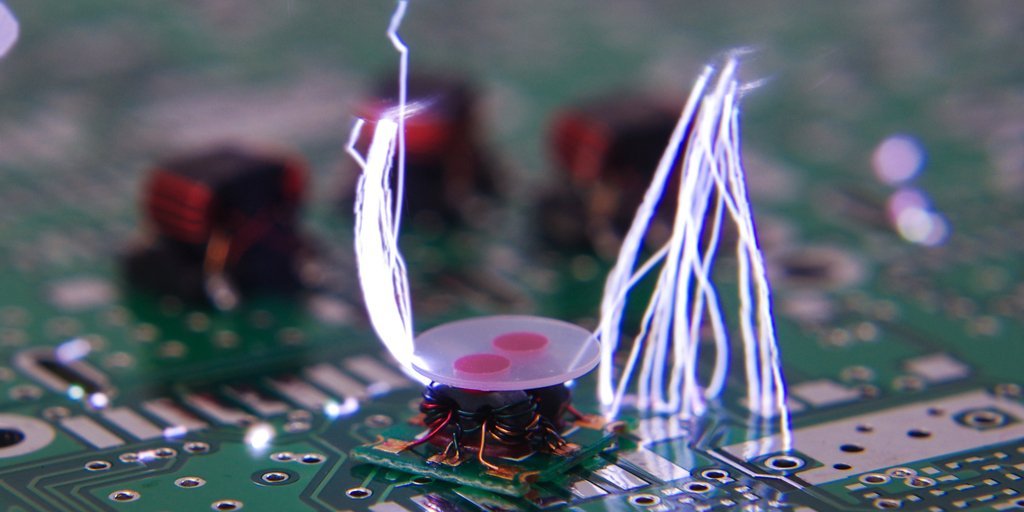Earlier this year, you may have seen reports of Eastbourne suffering over 1,000 lightning strikes in one hour and the subsequent power outages that affected many homes and traffic lights. But have you ever thought about what causes lightning?
All materials are made up of atoms which include a balance of negatively charged electrons and positively charged protons. However, through the contact and separation of two surfaces, one can become negatively charged while the other becomes positively charged — creating an electrostatic charge.
If two items are at different levels of electrostatic charge come into close enough proximity, there can be a spontaneous, rapid transfer of electrostatic charge as they try to come into balance. This transfer is known as electrostatic discharge (ESD) and is how lightning occurs. ESD can also be felt as an occasional zap when we touch a filing cabinet or door handle, creating a voltage of about 5kV!
What does ESD mean for electronic components and circuits?
Although the natural phenomenon of ESD is experienced by most of us, many manufacturers do not relate this as a potential cause for damage to their electronic products. However, ESD is a real and ever-present risk to product reliability and your reputation.
If you have ever felt the ‘electric shock’ from an ESD, imagine what that does to an electronic component. Plus, with electronic components getting smaller along with increased circuit density, the risk of ESD damage will only become higher.
The extent of ESD damage is entirely random and dependent on many factors, including whether the product fails now or later on. A catastrophic failure causes a failure such as a metal melt or junction breakdown in an ESD-sensitive item that is permanent, while a latent defect can occur when an ESD-sensitive item becomes partially degraded due to exposure.
Despite its name, a catastrophic failure is often the least costly type of ESD damage as it may be detected through normal inspection and repaired at an early manufacturing stage. In comparison, latent damage cannot be detected through routine inspection procedures — meaning a component may continue to perform its intended function before intermittent or permanent failure occurs further down the line.
As such, latent damage can often prove much costlier — both in terms of money and reputation — than catastrophic damage, particularly if the product passes all inspection steps before being completed, shipped and installed in a customer’s system.
Preventing ESD damage
Unfortunately, the risk of ESD damage cannot be designed out (regardless of what your design engineer says). ESD can and will damage electronic components and assemblies — and it is the responsibility of the manufacturer to ensure adequate handling, protection and process controls are in place to reduce the risk of ESD damage. In server rooms, the IT which holds all of your company’s data is also at risk if maintenance and repairs are not carried out using ESD safeguards.
A lack of ESD safeguards could void your warranty, including the return of defective products. So, rather than assuming your safeguards are adequate, you should always refer to IEC 61340 and implement protection measures from goods-in to goods-out. For example, ESD-sensitive items should be identified and protected with packaging shielding properties, while safeguards such as specially treated flooring, clothing, shoes, wrist straps, leads and bench mats can help reduce the build-up of static.
Additionally, it is important to establish an ESD Protected Area (EPA) — a defined space whereby all surfaces, ESD-sensitive devices, people and objects are kept at the same potential by grounding them. Full signage and warnings should then notify visitors of any EPAs.
All operators should be aware of the threat of ESD and understand the rules surrounding the control of static electricity, as well as how to use ESD control items properly. As such, it is critical to provide ESD control training and adequate certification to staff working in high-risk areas. Thorough ESD testing and audits are also required to maintain safeguards.
For further guidance and support about ESD, contact EMS at quality@emsolutions.uk.com.












